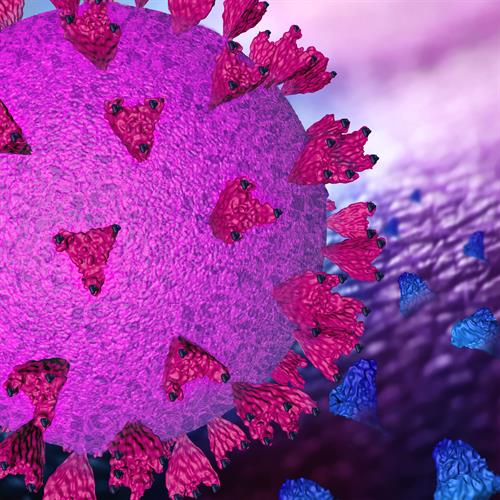November 4, 2020 -- Synthetic nanobodies may provide a practical avenue for the development of novel COVID-19 therapies compared to human antibodies, which are bulkier and require greater research investment. A study on synthetic nanobodies was conducted by a group of German researchers and published in Nature Communications on November 4.
As there are currently no clinically validated vaccines and limited therapeutic treatments for SARS-CoV-2, developing new therapeutics is a worldwide endeavor, with neutralizing antibodies as a central component. However, traditional antibody production suffers from long development times and costly production.
As an alternative to human antibodies, nanobodies (single-domain antibodies) offer a promising approach, conferring the benefits of small size, increased stability, and superior simplicity in production. In fact, the selection of specific bindings from a synthetic nanobody library can be achieved in a timeframe of only two to three weeks.
Traditionally, nanobody isolation from immunized camelids can take up to three to four months, whereas the synthetic nanobody (sb) approach does not require any immunization steps and requires only a fraction of the purified antigen for the selection process, thereby speeding the development process. Synthetic libraries produce large and diverse binder repertories that can facilitate rapid development of nanobody-based drugs.
The trimeric SARS-CoV-2 spike protein is the major antigenic determinant of the host immune response and one of the main drug targets for COVID-19. Each S1 subunit comprises a receptor-binding domain (RBD) that can switch between an exposed "up" conformation and a "down" conformation, where the latter is inaccessible for angiotensin-converting enzyme 2 (ACE2) binding.

First, researchers selected synthetic antibody sequences directed against the RBD of SARS-CoV-2 from three sybody (sb) libraries, obtaining 85 unique sb sequences derived from a wide variety of phylogenetic sources. Sybody 23 (sb23) displayed the highest RBD binding affinity during affinity analysis.
The team then selected 36 sb candidates and conducted a neutralization assay with lentiviral particles pseduotyped with the SARS-CoV-2 spike protein. Eleven screened sybodies were capable of neutralizing SARS-CoV-2, with sb23 presenting the most potent neutralization efficiency.
Sb23 neutralization efficiency was substantially increased by fusing it to an antibody-derived Fc domain. Results of a bio-layer interferometry (BLI) assay and competition assay demonstrated that sb23 competes with ACE2 for the same overlapping binding sites on the SARS-CoV-2 RBD.
Next, to gain insight into the structural basis of the neutralization activity of sb23 against SARS-CoV-2, the researchers collected small-angle x-ray scattering data on the RBD-sb23 complex. Importantly, they found that sb23 binds next to the ACE2-binding site in a sidewise manner.
They then determined the cryo-electron microscopy structure of the spike protein bound to sb23. In these models, sb23 binds to the inner edge of the ACE2 interaction interface in both the "up" and "down" spike conformations. This demonstrates the strength of small high-affinity and strongly neutralizing SARS-CoV-2 spike binders, as they are not sterically occluded in the same way that traditional, larger antibodies are.
Furthermore, the data shows that sb23 hinders binding of ACE2 in both the "1-up" and "2-up" confirmations. The "2-up" conformation of the spike protein confers extra avidity with sb23, blocking two binding sites for ACE2. According to the authors, the unique binding of sb23 in the "2-up" conformation may lead to the development of novel therapeutic bindings, including those that bind to the lower portion of the RBD and possibly the central helical region.
Finally, the researchers suggested that combining sb23 with other nonoverlapping sybodies could potentially increase the overall avidity towards the spike protein. These bispecific chimeric proteins could be advantageous in the development of novel COVID-19 therapeutic agents.
Senior author Christian Löw, PhD, group leader at the European Molecular Biology Laboratory (EMBL), emphasized the collaborative nature of the work in the current paper.
"The collaborative spirit has been enormous in these times, and everybody was motivated to contribute," Löw said. "Getting the results so quickly was only possible because the methodologies we used had already been established for other research projects unrelated to SARS-CoV-2. Developing these tools would have taken significantly more time and resources."
Do you have a unique perspective on your research related to immunology or drug development? Contact the editor today to learn more.
Copyright © 2020 scienceboard.net






